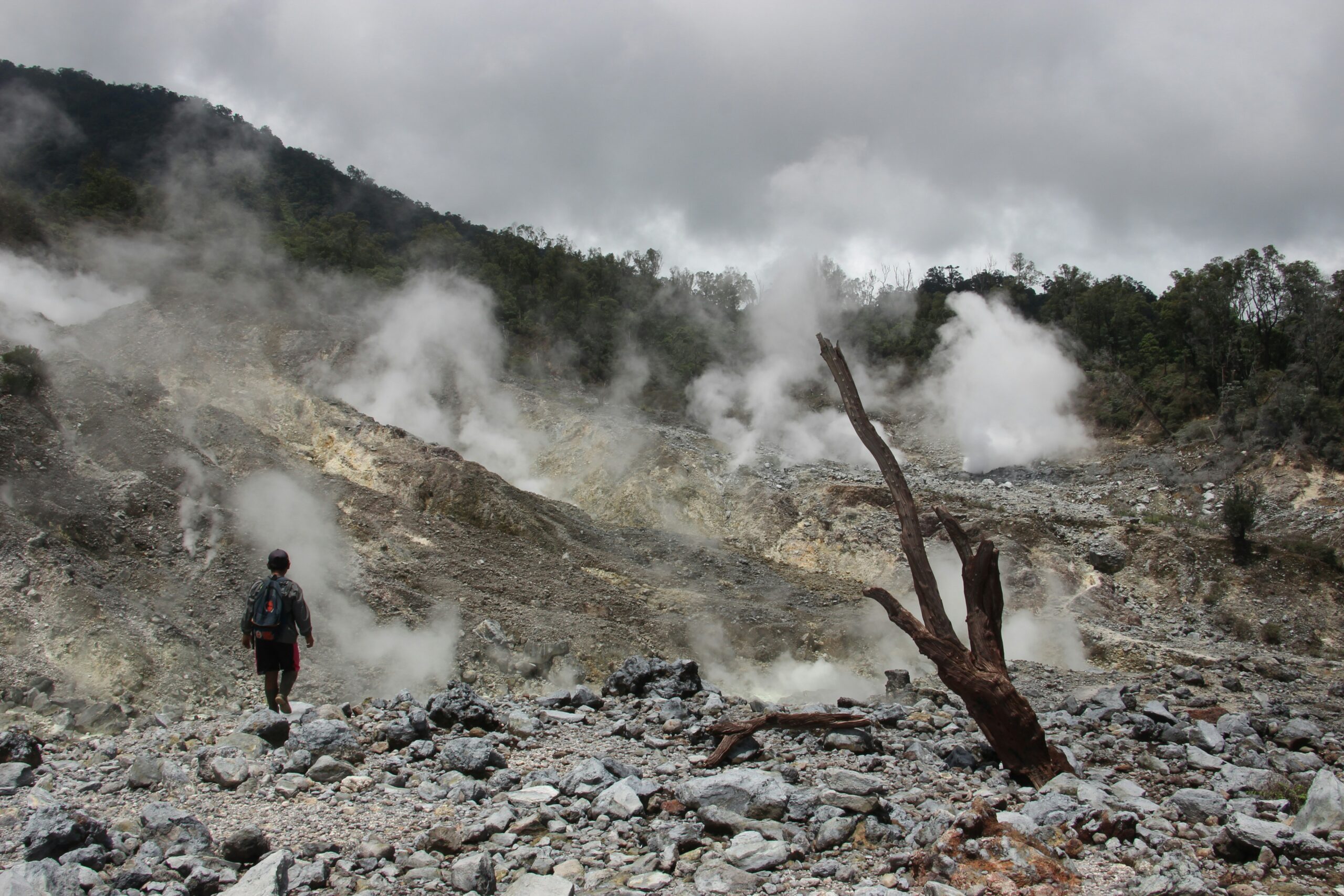
Introduction to Sustainable Travel in 2024
Sustainable travel is gaining significant momentum in 2024, driven by increasing awareness of environmental issues and a conscious effort to minimize the harmful effects of traditional travel practices. As travelers become more knowledgeable about the impacts of their journeys on the planet, they are seeking ways to reduce their carbon footprints and contribute positively to the destinations they visit.
The environmental toll of conventional travel methods is substantial, encompassing greenhouse gas emissions from flights, extensive use of single-use plastics, and the over-tourism of fragile ecosystems. In contrast, sustainable travel promotes practices that minimize environmental impact, support local communities, and preserve cultural and natural heritage. This approach is not only about reducing negative impacts but also about enhancing positive outcomes where possible.
With a growing global emphasis on sustainability, travelers are now looking for eco-friendly destinations that align with their values. Sustainable travel in 2024 focuses on making informed choices—from selecting accommodations with green certifications to engaging in activities that respect and preserve the environment. It includes an array of strategies such as choosing alternative modes of transportation, supporting local economies, and participating in conservation efforts.
The ultimate goal is to create a harmonious relationship between travelers and the environment, ensuring that future generations can also enjoy the beauty and diversity of our planet. By embracing sustainable travel practices, we can explore the world more responsibly and leave a positive legacy for the places and people we encounter. This blog post will guide you through some of the top eco-friendly destinations of 2024 and provide practical tips to help you travel more sustainably.
Emerging Eco-Friendly Destinations

As global awareness of environmental sustainability rises, new destinations are gaining recognition for their commitment to eco-friendly travel. These emerging eco-friendly travel destinations not only provide breathtaking landscapes but also prioritize sustainable practices aimed at preserving natural and cultural heritage. Among the leading pioneers in eco-tourism are Costa Rica, Iceland, and Slovenia, each showcasing a unique blend of conservation efforts, eco-tourism innovations, and community-oriented tourism.
Costa Rica stands out as a premier eco-friendly destination, renowned for its extensive biodiversity and successful conservation models. The nation has implemented robust policies to protect its lush rainforests, diverse wildlife, and pristine coastlines. More than 25% of Costa Rica’s land is safeguarded under national parks and reserves, promoting sustainable tourism activities like bird watching, jungle trekking, and eco-lodges that reduce environmental footprints. Additionally, the country leverages community-based tourism to ensure that local populations benefit directly from tourism revenues, fostering economic resilience and environmental stewardship.
Iceland, another exemplar of sustainable travel, combines striking natural beauty with rigorous eco-conscious practices. The country harnesses geothermal energy and hydroelectric power, significantly lowering carbon emissions and contributing to green tourism. Iceland’s stringent regulations protect its fragile ecosystems, including iconic landmarks like the Blue Lagoon, Thingvellir National Park, and the Vatnajökull glacier. Tourists are encouraged to partake in low-impact activities such as hiking, horseback riding, and visiting geothermal spas, which are designed to preserve the country’s natural resources while delivering authentic visitor experiences.
Slovenia, a hidden gem in Europe, has swiftly gained a reputation as an eco-friendly destination due to its holistic approach to sustainable tourism. The country emphasizes the importance of green practices across its tourism sector, from eco-label accommodations to organic and locally sourced gastronomy. Slovenia’s Green Scheme of Slovenian Tourism (GSST) certification system ensures that hotels, tour operators, and destinations adhere to strict environmental standards. Furthermore, initiatives like the Triglav National Park conservation project and the preservation of the Soča River Valley underscore Slovenia’s dedication to balancing tourism with environmental health and community well-being.
Overall, these destinations exemplify how eco-friendly travel is evolving beyond traditional models, offering travelers not only the chance to explore stunning landscapes but also to engage in sustainable practices that support local communities and protect the environment. As tourists become more environmentally conscious, the importance of choosing destinations that prioritize sustainable tourism will continue to grow, shaping the future of global travel.
Sustainable Travel Practices

Traveling sustainably is more critical than ever as we become increasingly aware of our environmental impact. Adopting sustainable travel practices not only helps preserve the planet but also enriches the travel experience, ensuring that future generations can enjoy the same natural wonders. Here are several ways to make traveling more eco-friendly and culturally respectful.
Choosing eco-friendly accommodations is a significant first step. Look for hotels and lodges that have received certification from recognized bodies like Green Key or EarthCheck. These accommodations often incorporate energy-saving measures, support local conservation efforts, and reduce waste through recycling and composting programs. When booking, consider smaller locally-owned guesthouses or eco-lodges, which tend to have a smaller environmental footprint and contribute directly to the local economy.
Supporting local economies goes beyond where you stay. Dine at locally owned restaurants, buy souvenirs from local artisans, and hire local guides. This not only minimizes the carbon footprint associated with importing goods but also fosters genuine cultural exchanges and sustains community livelihoods.
Minimizing waste is essential while traveling. Use reusable water bottles, bags, and utensils to cut down on single-use plastics. Many destinations now have water refill stations that make it easy to stay hydrated without generating plastic waste. Pack lightweight, reusable bags for shopping, and avoid items with excessive packaging. Practicing the principle of ‘leave no trace’ is equally important. This means sticking to marked trails, not picking plants, and carrying out all trash, including biodegradable items, which can disturb local ecosystems.
Respecting local cultures is another cornerstone of sustainable travel. Researching customs and traditions before arriving can prevent unintentional disrespect. Dress appropriately for the cultural context and ask for permission before taking photographs of people or private spaces.
Ethical wildlife tourism is crucial for sustainable travel. Avoid attractions that exploit animals, such as elephant riding or swimming with captive dolphins, as these activities often involve inhumane training methods and can cause significant stress to the animals. Instead, seek out sanctuaries and observatories that focus on conservation and rehabilitation, and observe wildlife from a distance in their natural habitats.
By integrating these practices into your travel routine, you can minimize your environmental footprint and contribute positively to the places you visit. Sustainable travel is about making ethical choices that support the preservation of global ecosystems and the well-being of local communities, ensuring that the beauty of our planet remains intact for future explorers.
Innovative Green Technologies in Travel

In recent years, the travel industry has made significant strides in embracing green technologies. One of the most transformative advancements has been the development of electric and hybrid transportation options. Automakers and public transportation systems are increasingly integrating electric vehicles (EVs) and hybrid models into their fleets, significantly reducing carbon emissions. Companies like Tesla and public transit systems in cities such as Oslo and Amsterdam are leading the way, making it feasible for travelers to opt for more sustainable modes of transport.
Eco-friendly accommodations are another area where green technologies are making a substantial impact. Modern sustainable hotels employ various innovations to minimize their environmental footprint. For instance, many hotels are now utilizing energy-efficient lighting and climate control systems, which not only reduce energy consumption but also enhance guest comfort. Additionally, the use of solar panels and wind turbines to generate electricity is becoming more commonplace, with properties like The Brando in French Polynesia and Sweden’s Treehotel setting impressive examples.
Renewable energy sources are also transforming how tour operators function. A growing number of operators are incorporating renewable energy into their business models, facilitating eco-tours that minimize environmental impact. Companies such as Responsible Travel and G Adventures are at the forefront, offering tours powered by renewable energy and promoting responsible travel practices. These tours often leverage solar energy for cooking and charging electronic devices, further reducing their carbon footprint.
What truly stands out are the companies pioneering these technologies, setting benchmarks for others in the industry. For instance, LYFT’s Green Mode allows passengers to choose hybrid or electric rides, setting a new standard for urban transport. Likewise, Virgin Voyages has committed to eliminating single-use plastics and implementing state-of-the-art waste management systems on their cruise ships, showcasing how a large-scale operation can uphold sustainability principles.
These innovations collectively make it easier and more appealing for travelers to make environmentally conscious choices. As green technologies continue to evolve, the future of sustainable travel looks exceedingly promising, paving the way for a more eco-friendly travel industry in 2024 and beyond.
Real-World Examples of Sustainable Travel

Sustainable travel initiatives are making significant strides globally, transforming the way we explore the world. One exemplary destination is Costa Rica, renowned for its commitment to eco-tourism. The country’s emphasis on conservation is evident in its protected national parks, which cover around 25% of its land area. Monteverde Cloud Forest Reserve, for instance, attracts eco-conscious travelers with its lush biodiversity while promoting conservation efforts through educational programs and eco-friendly lodging options.
Similarly, New Zealand’s Fiordland National Park has been lauded for balancing tourism with environmental stewardship. The park limits visitor numbers to mitigate human impact and employs sustainable practices such as electric boat tours to reduce carbon emissions. Visitors are encouraged to follow strict guidelines to protect the pristine ecosystem, illustrating a harmonious blend of visitor experience and nature conservation.
On a different continent, Bhutan offers another compelling case of successful sustainable travel. This Himalayan kingdom implements a “high-value, low-impact” tourism policy, mandating a daily fee that funds environmental and cultural preservation projects. This approach limits the number of tourists, ensuring that the natural and cultural heritage is not overwhelmed. Travelers to Bhutan often share how this model not only protects the environment but also enriches their travel experience with a deeper connection to the local culture and landscapes.
Adding a personal dimension, Sarah Thompson, an avid eco-traveler, recounted her visit to the Azores, Portugal, as a transformative experience. “The islands are a model of sustainability. From renewable energy initiatives to the protection of marine life, the emphasis on eco-friendly practices is clear. It made my trip feel responsible and rewarding, knowing my presence contributed positively rather than detracting from the environment,” she shared.
These examples underscore that sustainable travel not only preserves the environment but also enriches travelers’ experiences by connecting them with nature and respecting local cultures. As more destinations adopt such practices, the travel industry progressively shifts towards a future where tourism enriches both the planet and the people who explore it.
Actionable Tips for Eco-Friendly Travel

When it comes to sustainable travel, small actions can make a significant impact on reducing your carbon footprint. By integrating thoughtful practices into your travel plans, you can contribute positively to the environment while enriching your travel experience. Here are some actionable tips to consider:
Firstly, packing light not only makes your travels more efficient but also reduces the aircraft’s weight and, in turn, its fuel consumption. Aim to pack versatile clothing items and essentials that meet your needs without excess. This minimalistic approach helps in decreasing the overall demand for resources and energy.
The use of reusable items is another critical step towards eco-friendly travel. Consider carrying a durable water bottle, reusable shopping bags, and utensils. These simple swaps can drastically minimize single-use plastics, which often end up polluting natural habitats. Many destinations also offer incentives for travelers who bring their own items, further promoting sustainable practices.
Participating in carbon offset programs is an effective way to counterbalance the emissions from your travel. Several airlines and travel companies provide options to offset your carbon emissions by investing in renewable energy projects, reforestation, and other environmental initiatives. Opting for such programs allows you to neutralize your travel’s environmental impact, fostering a more sustainable travel culture.
Supporting eco-friendly businesses at your destination is crucial. Choose accommodations that prioritize sustainability through energy-efficient practices, waste reduction, and community support. Dining at local, farm-to-table restaurants not only reduces food miles but also bolsters the local economy. Whenever possible, use public transportation, rent bicycles, or walk to explore the area, thereby reducing your reliance on fossil-fuel-powered vehicles.
Mindful choices in every aspect of your travel experience—from transportation to dining—can collectively promote a greener planet. Sustainable travel is about progress, not perfection. By making intentional decisions, you play a vital role in preserving our environment for future generations. Every small step counts and creates a ripple effect towards a more sustainable world.
Overcoming Challenges in Sustainable Travel

Embracing sustainable travel practices remains a formidable challenge for many travelers due to several key obstacles. One primary concern is the often higher costs associated with eco-friendly options. Sustainable accommodations, organic foods, and green transportation solutions frequently come with a larger price tag, deterring budget-conscious travelers. Additionally, the limited availability of eco-friendly choices in certain destinations further complicates efforts to travel sustainably. Convenience also plays a significant role, as many are accustomed to readily available, conventional travel amenities that may not meet sustainable criteria. However, these challenges can be mitigated through thoughtful strategies and resources.
One effective strategy is prioritizing budget-friendly sustainable travel. Travelers can look for affordable eco-friendly accommodations by leveraging platforms such as EcoBnB and Green Key, which list budget-conscious green lodging options. Additionally, exploring smaller, locally-operated inns and camping sites can not only be cost-effective but also reduce one’s carbon footprint. Another way to save money while traveling sustainably is by using public transportation or, where feasible, opting for walking and cycling. These choices are both environmentally friendly and economical.
To counteract the limited availability of sustainable options, planning ahead is crucial. Thorough research on eco-friendly accommodations, dining, and transportation in a destination can help preemptively address difficulties. Utilizing online resources and apps dedicated to sustainable travel can provide valuable information on green venues and services. Networking with like-minded travelers can also offer insider tips on lesser-known sustainable options.
Enhancing convenience in sustainable travel involves making incremental adjustments rather than drastic changes. Travelers can start with small, manageable steps such as carrying reusable water bottles, shopping bags, and cutlery. Opting for accommodations with established sustainability practices can facilitate a seamless eco-friendly experience. Furthermore, choosing airlines committed to reducing carbon emissions and participating in carbon offset programs can also contribute to more sustainable travel.
By implementing these solutions, travelers can efficiently navigate the challenges of sustainable travel. Adopting practical strategies and utilizing resources can make eco-friendly travel a more accessible and rewarding endeavor, simultaneously fostering a positive impact on the environment.
Looking Ahead: The Future of Sustainable Travel

As we look to the future, the landscape of sustainable travel is poised for significant transformation, driven by consumer demand and technological advancements. Emerging trends and predictions suggest that the industry will continue to innovate in ways that prioritize environmental stewardship and social responsibility. One notable trend is the increasing popularity of ecotourism, where travelers seek immersive experiences that benefit local communities and preserve natural habitats. This shift highlights a broader recognition of the need to protect the very environments that make travel so enriching.
Technological advancements are also set to play a crucial role in shaping the future of sustainable travel. Innovations in electric transportation, renewable energy-powered accommodations, and smart travel apps are reducing the carbon footprint of tourism. For instance, electric planes and hybrid vehicles are gradually being introduced, offering more sustainable options for transportation. Additionally, smart technology can enhance resource management in tourist destinations, ensuring water conservation, waste reduction, and energy efficiency.
The role of travelers in this evolving landscape cannot be overstated. As conscious consumers, travelers have the power to drive demand for sustainable practices and hold industries accountable. By making informed choices and supporting eco-friendly businesses, travelers can contribute to positive change. Furthermore, the importance of collective efforts in creating a sustainable planet is paramount. Collaborative initiatives between governments, businesses, and non-profit organizations are essential to establishing comprehensive sustainability policies and practices.
For those committed to sustainable travel, continuous learning and advocacy are vital. Staying informed about the latest sustainable practices and participating in conservation efforts can amplify individual contributions. Travelers are encouraged to educate themselves about the environmental and social impacts of their journeys, choose destinations and services that adhere to sustainability principles, and share their experiences to inspire others.




